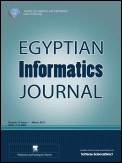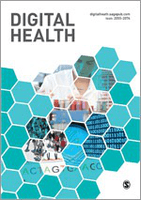
International Journal of E-Health and Medical Communications
Scope & Guideline
Connecting the dots between technology and patient care.
Introduction
Aims and Scopes
- Digital Health Technologies:
The journal extensively covers the development and implementation of digital health technologies, including mobile applications, telemedicine, and eHealth systems, aimed at enhancing patient care and health outcomes. - Artificial Intelligence in Healthcare:
There is a significant emphasis on the application of artificial intelligence and machine learning techniques for disease detection, diagnosis, and management, showcasing innovative approaches to healthcare challenges. - Data Analytics and Health Informatics:
Research in this journal often explores data-driven methodologies, including big data analytics, predictive modeling, and machine learning, to analyze health trends and improve healthcare delivery. - Health Communication Strategies:
The journal investigates various health communication strategies, including the role of social media and messaging apps in promoting health awareness and education. - Blockchain Applications in Healthcare:
A unique contribution of the journal is its focus on blockchain technology's potential applications in healthcare, particularly concerning data security, patient privacy, and record management.
Trending and Emerging
- Telehealth and Remote Monitoring:
The COVID-19 pandemic has accelerated the adoption of telehealth solutions, with an increasing number of studies focusing on remote patient monitoring and virtual consultations. - AI and Machine Learning Innovations:
There is a burgeoning interest in the application of AI and machine learning across various domains of healthcare, including diagnostics, treatment personalization, and operational efficiencies. - Integration of IoT in Healthcare:
The integration of Internet of Things (IoT) devices in healthcare is emerging as a key theme, with research focusing on real-time health monitoring and smart healthcare solutions. - Patient-Centric Care Models:
Emerging studies emphasize patient-centric approaches, highlighting the importance of user experience and engagement in digital health interventions. - Health Data Security and Privacy:
As digital health solutions proliferate, there is an increasing focus on ensuring the security and privacy of health data, particularly through the use of blockchain technology.
Declining or Waning
- Traditional Medical Practices:
There is a noticeable decrease in publications focusing solely on traditional or non-digital medical practices, as the field increasingly prioritizes technologically integrated healthcare solutions. - General Health Studies Without Technological Integration:
Research that does not incorporate technology or digital tools is becoming less common, indicating a shift towards studies that combine health issues with technological advancements. - Static Healthcare Models:
There has been a waning interest in static healthcare models that do not leverage new technologies or data analytics, as the focus shifts towards dynamic, technology-driven healthcare solutions.
Similar Journals

Healthcare Informatics Research
Fostering collaboration and knowledge sharing in health informatics.Healthcare Informatics Research, published by the Korean Society of Medical Informatics, is a leading open access journal that has been advancing the field of healthcare informatics since its inception in 2010. With an ISSN of 2093-3681 and E-ISSN of 2093-369X, the journal provides a vital platform for disseminating high-quality research aimed at improving healthcare systems through innovative informatics solutions. Recognized for its contributions, it holds a Q2 rank in Biomedical Engineering and Q3 rankings in both Health Informatics and Health Information Management for 2023, reflecting its stature within the academic community. The journal is committed to open access, ensuring that research is freely accessible to researchers, professionals, and students worldwide, thus promoting knowledge sharing and collaboration. Located in the dynamic city of Seoul, South Korea, the journal serves as a hub for groundbreaking studies that impact health systems globally, making it an essential resource for those at the forefront of healthcare technology and management.

Journal of Healthcare Informatics Research
Fostering innovation in healthcare through information technology.The Journal of Healthcare Informatics Research, published by SPRINGERNATURE, serves as a premier platform for the dissemination of innovative research and insights at the intersection of healthcare and information technology. Established in 2017 and operating out of Switzerland, this journal covers a broad scope encompassing Artificial Intelligence, Computer Science Applications, Health Informatics, and Information Systems, achieving a Q1 ranking across these fields in 2023. Notably, it ranks impressively within Scopus, holding positions in the top percentages across various categories, including 12th in Health Informatics. With an unwavering commitment to fostering advancements in healthcare through informatics, this journal is designed for researchers, professionals, and students alike, providing open access to significant findings and methodologies that drive the future of health technology. As the field evolves, the Journal of Healthcare Informatics Research stands as a vital resource for those dedicated to improving patient outcomes and operational efficiencies through data-driven strategies.

CIN-COMPUTERS INFORMATICS NURSING
Catalyzing Change in Healthcare through Informatics ResearchCIN-COMPUTERS INFORMATICS NURSING is a distinguished journal that publishes cutting-edge research at the intersection of nursing and information technology. Published by Lippincott Williams & Wilkins, the journal has been a pivotal platform since 2002, catering to the needs of health informatics professionals and nursing researchers. With an impressive impact factor and ranked within Q2 in Nursing (miscellaneous) and other relevant categories, it serves as a key resource for advancing knowledge and best practices in the field. The journal's inclusion in important databases ensures broad visibility and access to the latest findings that influence healthcare delivery. CIN-COMPUTERS INFORMATICS NURSING welcomes a diverse range of articles, including empirical studies, reviews, and innovative methodology approaches, making it an invaluable asset for clinicians, educators, and scholars dedicated to enhancing nursing informatics and improving patient outcomes.

Health Informatics Journal
Unlocking insights at the intersection of health and technology.Health Informatics Journal, published by SAGE Publications Inc., serves as a premier platform for research and discussion in the dynamic field of health informatics since its inception in 1995. With an impressive Q2 ranking in the Health Informatics category and a notable 77th percentile ranking in the Scopus database, this journal provides an essential resource for academics and professionals alike. The journal's transition to Open Access since 2020 has further broadened its reach, ensuring that innovative research is accessible to a global audience. Covering a wide range of topics within health informatics, the journal aims to foster high-quality scholarly communication and facilitate the dissemination of cutting-edge insights that can help advance health care delivery and patient outcomes. With an ongoing commitment to excellence, the Health Informatics Journal is dedicated to enhancing the intersection of technology and healthcare through rigorous research and collaborative exploration.

Frontiers in Digital Health
Transforming Healthcare with Cutting-Edge TechnologyFrontiers in Digital Health is an innovative peer-reviewed journal published by FRONTIERS MEDIA SA, focusing on the intersection of digital technology and healthcare. As an Open Access journal since 2020, it aims to democratize knowledge by making cutting-edge research freely available to the global community. The journal covers a wide array of topics within the realms of Biomedical Engineering, Health Informatics, and a variety of Computer Science Applications, ensuring interdisciplinary collaboration and advancements. Recognized for its excellence, it holds prestigious rankings in multiple categories, including Q1 in Biomedical Engineering and Q2 in several related fields according to the 2023 metrics. Set in the heart of Switzerland, the journal fosters a comprehensive approach to enhancing digital health technologies, making it an essential resource for researchers, professionals, and students dedicated to improving health outcomes through innovation.

Health Information Management Journal
Navigating the Intersection of Health and InformationHealth Information Management Journal, published by SAGE Publications Inc., is a premier academic resource dedicated to the intersection of health informatics, health information management, health policy, and leadership in health services. With an impressive track record since its inception in 2002, this journal steadily contributes to scholarly dialogue and innovation in the field, holding a commendable Q2 ranking in Health Informatics, Health Information Management, and Health Policy, and a distinguished Q1 ranking in Leadership and Management as of 2023. As a critical platform for researchers, professionals, and students, it fosters the dissemination of cutting-edge research and practical applications, bridging the gap between theory and practice. Though not an open-access journal, it provides a wealth of subscription-based resources that are invaluable for advancing knowledge and improving health systems globally. The journal’s commitment to high-quality, peer-reviewed content ensures that it remains a vital tool for anyone invested in the future of health information management.

Intelligent Medicine
Unlocking the potential of technology in medicine.Intelligent Medicine, published by Elsevier, is a leading open-access journal dedicated to advancing the fields of Artificial Intelligence, Biomedical Engineering, Health Informatics, and related areas within Medicine. Since its inception in 2021, it has quickly established itself among the top tier of academic publications, holding a commendable Q2 ranking in several categories, including a rank of #51 in Health Informatics and #104 in Medicine (Miscellaneous) as of 2023. The journal aims to disseminate innovative research that harnesses AI technologies to improve healthcare outcomes, bridging the gap between cutting-edge technology and medical practice. With its open-access model, Intelligent Medicine ensures broad dissemination of research findings, facilitating collaboration and knowledge sharing among researchers, practitioners, and students globally. Located in Amsterdam, Netherlands, this journal plays a pivotal role in shaping the future of intelligent healthcare solutions, inviting submissions that push the boundaries of conventional medicine through creative and impactful research.

Egyptian Informatics Journal
Elevating Research in Computer Science and ManagementEgyptian Informatics Journal, published by CAIRO UNIV, FAC COMPUTERS & INFORMATION, is an esteemed open-access publication that has been making significant contributions to the fields of Computer Science, Information Systems, and Management Science since its inception in 2010. With its ISSN 1110-8665 and E-ISSN 2090-4754, the journal stands out for its commitment to disseminating high-quality research, evidenced by its Q1 ranking in 2023 across multiple disciplines in Scopus, including a notable ranking of #15 in Decision Sciences and Management Science, and #44 in Information Systems. The journal's coverage spans from 2010 to 2024, making it a vital resource for researchers and practitioners looking to stay abreast of contemporary advancements in informatics. With an increasing impact and a remarkably growing readership, the Egyptian Informatics Journal provides an indispensable platform for scholarly dialogue and innovation in informatics, catering not only to researchers but also to professionals and students aiming to excel in these rapidly evolving fields.

BMC Medical Informatics and Decision Making
Transforming medical decision-making with cutting-edge research.BMC Medical Informatics and Decision Making is a leading journal in the fields of medical informatics and health policy, published by BMC since its inception in 2001. With an impressive impact factor reflecting its status as a Q1 journal in both Computer Science Applications and Health Informatics, it serves as a vital resource for researchers, professionals, and students dedicated to advancing healthcare through informatics. The journal is committed to disseminating high-quality, peer-reviewed research focused on the innovative use of information technology in healthcare, decision-making processes, and policy formulation. As an Open Access platform, it ensures that findings are widely accessible and can foster collaboration across various disciplines. Positioned at the cutting edge of health informatics, BMC Medical Informatics and Decision Making aims to influence practice and inspire new research directions, making it an essential publication for anyone involved in improving health systems worldwide.

Digital Health
Unlocking the Future of Health with Digital Insights.Digital Health is a pioneering open-access journal published by SAGE Publications Ltd, dedicated to advancing the field of health technology and its intersection with health policy, informatics, and the broader medical landscape. Since its inception in 2015, the journal has rapidly established itself as an essential resource for researchers, professionals, and students, serving as a platform for innovative research that leverages digital tools to improve health outcomes. Currently ranked in the Q2 category across four relevant domains, including Computer Science Applications and Health Informatics, it commands respect within the academic community. With its accessible framework, Digital Health facilitates the dissemination of critical findings and new methodologies that inform policy and practice. The journal’s commitment to open access promotes worldwide access and cooperation, making significant contributions to the evolving landscape of digital health.